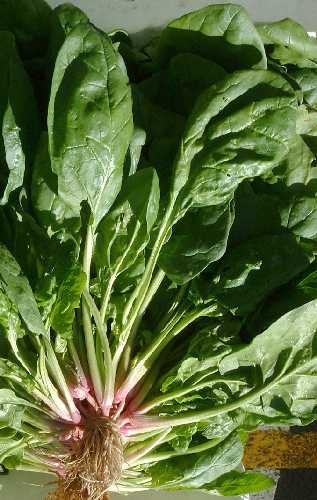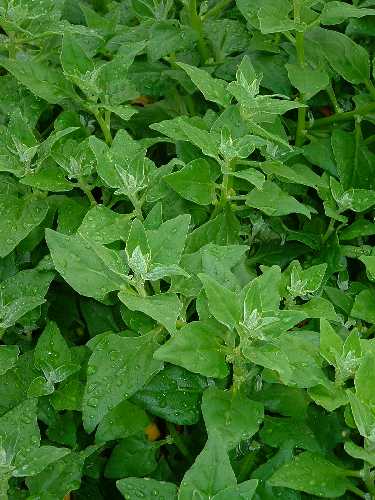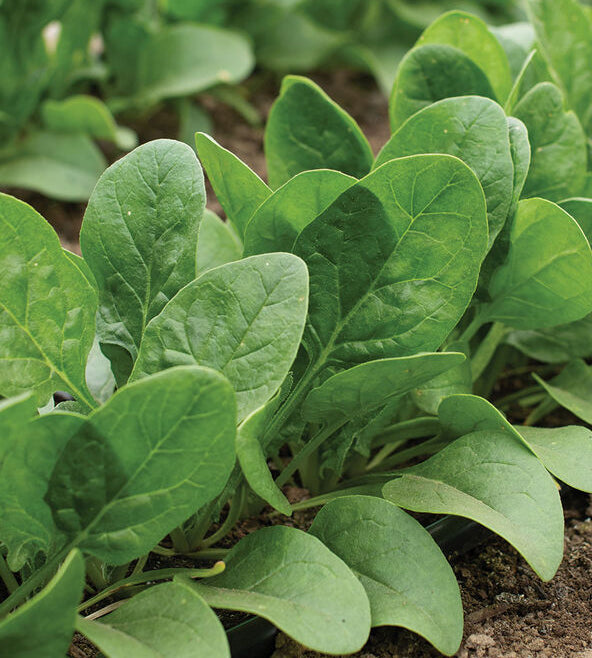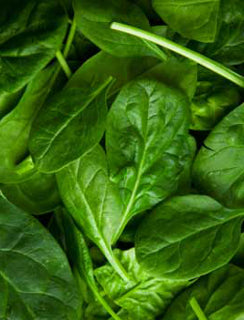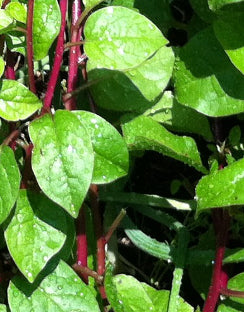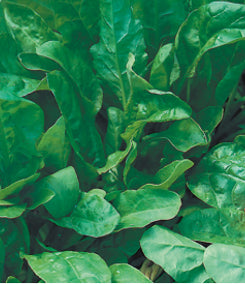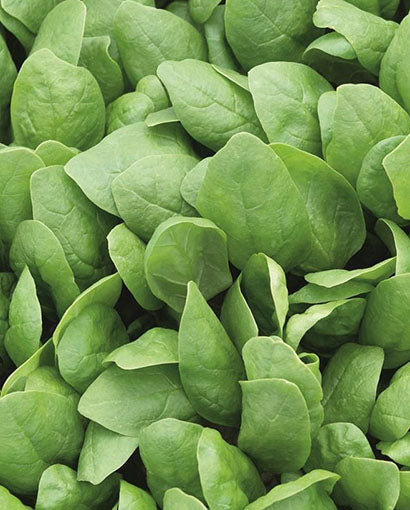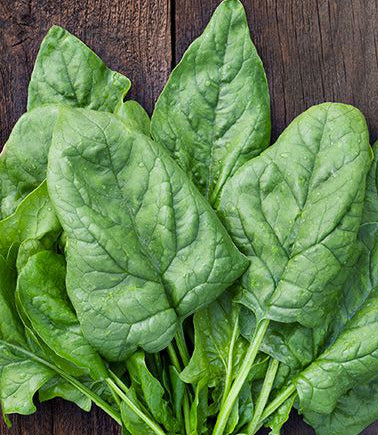Spinach Growing Guide
The essential guide to growing spinach (Spinacia oleracea) from seed; with notes on germination, cultivation, harvest and even kitchen uses.
Spinach types at a glance:
- English/True (round-leaf) – tender leaves, mild flavour, ideal for raw salads or delicate sautéing. Prefers cool weather, bolts in heat. The classic is 'Bloomsdale'.
- Arrow-leaf (Asian/Middle-Eastern lines) – pointed leaves, slightly firmer texture, holds up to stir-fries and can take warmer conditions before bolting. See 'Flamingo'.
- Savoyed – heavily crinkled, deep-green leaves, robust earthy taste; great for steaming, soups and freezing. Cold-tolerant and rain-shedding.
- Semi-savoy – lightly puckered compromise between savoyed toughness and English tenderness; versatile in kitchen and garden.
- Perennial substitutes – New Zealand spinach (Tetragonia) and Malabar spinach (Basella) thrive in summer heat but are botanically different; treat as warm-season greens if true spinach struggles.
Ave. Seeds per Gram: ≈ 100 seeds
Germination Temperature: 4 – 25 °C (best 10–18 °C); emergence in 5 – 10 days.
Feed Requirements:
- Cool-season crops: moderate.
- Warm-weather sowings (spring/summer): bump to heavy with extra compost for rapid leaf growth.
- Spinach favours well-limed soil (pH 6.5 – 7.5).
Growing Notes:
Climate & Timing
- Temperate & cool zones: sow Feb–Apr and Aug–Oct for autumn-winter and late-spring harvests.
- Sub-tropics: main sowings Apr–Jun; arrow-leaf strains can extend into Jul–Aug.
- In heatwaves germination falters – pre-chill seed in the fridge 2 days or keep beds damp and shaded.
- Succession-sow every 10 days for steady supply.
Sowing & Spacing
- Direct-sow 8 mm deep.
- For bunching/family use: thin to 25 – 35 cm apart in rows 40 – 50 cm apart.
- For baby-leaf scatter sow densely, then harvest with scissors.
Site & Soil
- Free-draining, humus-rich loam in full sun (or light shade in warm months).
- Keep beds evenly moist – dry soil and heat trigger bolting and bitterness.
Care
- Mulch lightly.
- Water at soil level to deter downy mildew.
- If growth slows or leaves yellow, foliar spray or side dress with fish/seaweed tea (high in nitrogen).
- Promptly remove any plants that start to send up flower spikes.
Common Problems & Fixes:
- Slugs & snails ravage seedlings – bait or hand-pick at dusk.
- Aphids & whitefly – hose off or spray with potassium soap; encourage ladybirds.
- Leaf miners tunnel leaves – remove affected foliage and use row covers.
- Downy mildew/bacterial leaf spot in wet spells – maximise airflow, avoid overhead watering, grow resistant varieties.
- Bolting in hot, long days – choose arrow-leaf or semi-savoy types, keep soil cool with mulch and irrigation.
Harvesting Notes:
When to Harvest
- Baby leaves: 3 – 4 weeks after germination, 10 cm tall.
- Mature leaves: 50 – 100 days, depending on season and variety.
How to Harvest
- Pick outer leaves individually for cut-and-come-again regrowth or cut whole plants 2 cm above soil.
- Harvest in the cool of morning for best crunch.
Storage & Use
- Unwashed leaves store up to a week in the fridge crisper inside a perforated bag.
- Blanch 2 minutes then freeze for winter quiches, curries or spanakopita.
- For salads, plunge just-picked leaves into cold water, spin dry and dress immediately.
Grow your own spinach for a year-round hit of iron-rich greens – whether it’s cool-weather English leaves or arrow-leaf bunches that shrug off the Aussie sun, there’s a spinach to suit every patch and plate.
Filters
13 products
SPINACH 'Bloomsdale Longstanding'
Sale priceFrom $3.75
SPINACH - NEW ZEALAND
Sale price$3.75
SPINACH ‘Auroch’ F1
Sale price$3.75
Spinach ‘Baby Leaf’ F1
Sale price$3.75
Spinach ‘Flamingo’ F1
Sale price$3.75
Spinach ‘Galilee’
Sale price$3.75
Spinach ‘Malabar Red Climbing’
Sale price$3.75
Spinach ‘Perpetual’
Sale price$3.75
Spinach ‘Reddy’ F1
Sale price$3.75
SPINACH ‘Renegade’ F1
Sale price$3.75
Spinach ‘Seaside’ F1
Sale price$3.75
SPINACH ‘Tyee’ F1
Sale price$3.75
SPINACH ‘Winter Giant’
Sale price$3.75

